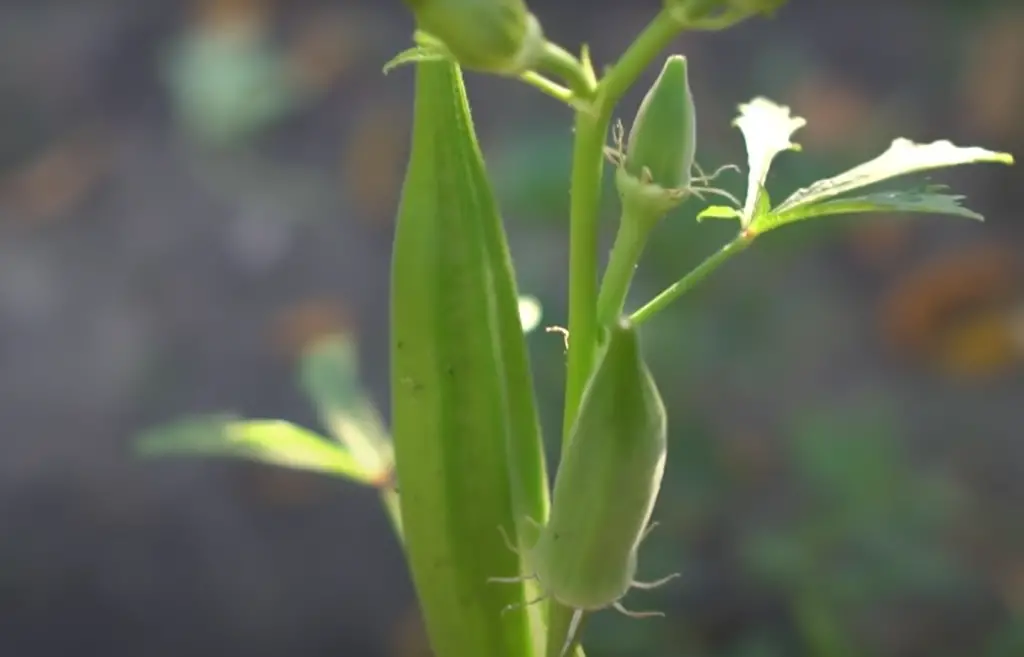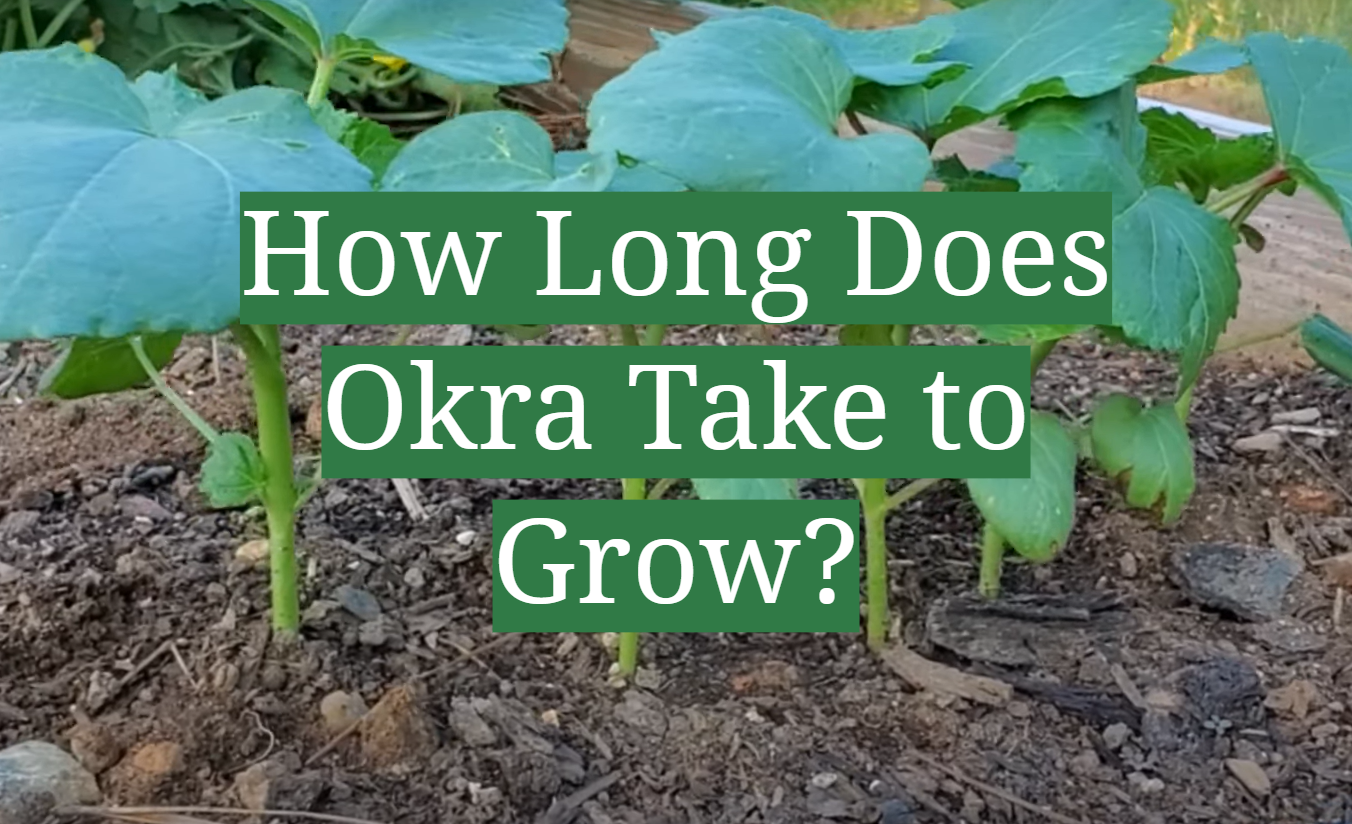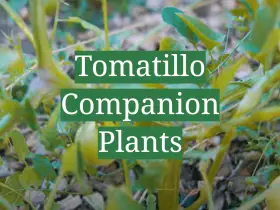Are you an avid gardener who has recently begun growing okra in your garden? Or maybe you’re a beginner looking to get into gardening and are interested in learning more about the basics of cultivating okra at home. Either way, you’ve come to the right place!
With some basic knowledge on how long it takes for okra to reach maturity, along with tips on how best to plant the seeds and care for these beautiful plants as they grow, we can help take your gardening journey with okra from beginning to end. So if you’re ready, let’s dive right into the wonderful world of planting okra!
Ideal Soil Composition & pH for Growing Okra
When it comes to growing okra, one of the most important factors to consider is soil composition. The ideal type of soil for growing okra should be well-aerated and capable of retaining adequate amounts of moisture during dry spells.
Achieving the right soil composition and pH level will ensure that your okra plants get the nutrients they need to thrive.

You can easily test your soil’s pH level with a purchased kit or by sending a sample of your garden soil to an agricultural testing lab near you.
Okra Light and Temperature Requirements
Okra plants love the sunshine, so it’s important to select a sunny location with at least 8 hours of direct sunlight per day.
It should also be noted that okra does best in warm climates; therefore, if you’re planting them in cooler areas, they may take longer than usual to reach maturity. The optimal temperature for growing okra is between 65-90°F.
How Long Does Okra Take to Grow?
Now that you know the ideal soil composition and pH, as well as the light and temperature requirements for growing okra, let’s answer the big question: how long does okra take to grow?
The exact amount of time it takes for okra to mature depends on a few factors, such as the type of variety planted and the climate conditions, but generally you can expect it to take anywhere from 45-90 days.
That said, some varieties of okra can mature in as little as 35 days or take well over 90 days depending on the specific variety and growing conditions.
Where to Plant Okra?
Okra is a warm-season annual that requires full sun and well-drained soil to thrive. If you’re planting okra in an area with cool temperatures, it’s best to wait until the weather warms up before planting or transplanting your okra seedlings.
If you live in a warmer climate, however, you can plant okra right away. When growing okra, it’s important to give the plants plenty of space between them by planting in rows or blocks that are spaced at least 12 inches apart.
How to Grow Okra?
Now let’s talk about how to properly grow okra. To begin, it’s best to use high-quality, organic seedlings from a reputable supplier, as this will ensure the highest yields.

Once your seedlings are ready for planting, you can either start them directly in the garden or transplant them into your growing area. Generally speaking, it’s best to wait until the soil temperature is at least 65°F before planting okra.
When transplanting your okra seedlings, make sure that the plants are about 12 inches apart and have plenty of space to spread their roots.
It’s also important to water your plants regularly and ensure that they get enough nutrients by fertilising every 3-4 weeks.
Spacing Okra in the Garden
When planting okra, it’s important to give the plants plenty of space between them. This will allow for better air circulation and more efficient use of the soil, as well as eliminate competition among plants.
Generally speaking, it’s best to plant your okra in rows that are spaced at least 12 inches apart. If you’re planting multiple rows, make sure to space them at least 24 inches apart.
How to Water Okra Plants
It’s important to keep your okra plants well-watered in order to promote healthy growth and increase yields. Generally speaking, it’s best to give your okra plants an inch of water per week. This can be done either by hand or through a drip irrigation system.
If you are only able to water your okra plants hand, it’s best to do so at the beginning of the day, when temperatures are cooler and winds have died down.
This will prevent evaporation and ensure that your okra plants get an ample amount of moisture.
Nutrients Needed for Growing Okra
Although okra plants are fairly low-maintenance, they do need to be fertilised in order to achieve their full potential.
It’s best to use a 5-10-5 fertiliser diluted with water and applied every 3-4 weeks during the growing season. This will ensure that your okra plants get all of the vital nutrients they require for optimal growth.
Common Okra Pests & Disease
Unfortunately, like many other plants, okra can be subject to several pests and diseases.
The most common okra pest is the cutworm, which can cause significant damage to young seedlings. To prevent this from happening, it’s best to use an organic insecticide or set up barriers around your okra plants.
Okra is also prone to several diseases such as mosaic virus, anthracnose, and leaf spot. To prevent this from happening, it’s best to avoid overcrowding your okra plants and use organic fungicides if you notice any signs of disease.
Harvesting Okra
When the time comes to harvest your okra plants, it’s important to use sharp pruners or scissors and cut the pods at their base.

It’s best to check your plants every few days and harvest when the pods are 3-4 inches in length. If you wait too long, the pods may become tough and woody.
Storage of Okra
Once you have harvested your okra, it’s important to store them properly in order to extend their shelf life.
Freshly harvested okra can be stored either in a plastic bag in the refrigerator or frozen for up to six months. If you choose to freeze your okra, make sure that the pods are cut into small pieces before freezing.
Recommended Okra Varieties
There are many different varieties of okra available, each with its own unique characteristics.
It’s best to do some research before selecting a variety in order to find one that fits your climate and growing conditions.
No matter what type of okra you choose to grow, it’s important to take the time and effort required to ensure that you get the best possible harvest. Following all of the tips mentioned above will help ensure a successful okra crop!
FAQ
What is the best month to plant okra?
The best time to plant okra will depend on where you live. If you’re located in a warm climate, it’s best to wait until mid-spring or early summer when the soil temperature is at least 65°F and air temperatures are consistently better. For cooler climates, late spring or early fall is typically the best time to plant okra.
How can I tell when okra is ripe?
Okra pods are ready to be harvested when they are 3-4 inches in length and still tender. If you wait too long, the pods will become tough and woody so it’s important to check your plants regularly and harvest as soon as possible.
How long does it take okra to start producing?
Okra will begin to produce once the plants reach maturity, which typically takes anywhere from 50-70 days. It’s important to note that okra is a warm-weather crop and may take longer to mature in cooler climates.
Can I grow okra indoors?
Yes, it is possible to grow okra indoors, however, it’s not recommended as okra plants require plenty of sunlight and space to thrive.

If you choose to grow okra indoors, make sure that the plants have access to at least 6 hours of direct sunlight per day and are planted in large pots with well-draining soil.
How do you grow okra fast?
The best way to grow okra quickly is to start with healthy seedlings and provide them with plenty of sunlight, water, and nutrients.
It’s also important to space your plants at least 12 inches apart and keep weeds away from the area as they can compete with your okra plants for resources. Finally, it’s important to harvest your okra regularly as this will help encourage continued growth.
What is the lifespan of the okra plant?
Okra plants typically have a lifespan of anywhere from 3-5 months. After this period, the okra plant will begin to decline and should be removed from the garden.
How often should I water okra?
It’s best to give your okra plants an inch of water per week. This can be done either by hand or through a drip irrigation system.
If you are only able to water your okra plants hand, it’s best to do so at the beginning of the day when temperatures are cooler and winds have died down. This will prevent evaporation and ensure that okra plants get an ample amount of moisture.
Is okra hard to plant?
No, okra is not difficult to plant as long as you follow the proper steps. Make sure to choose a sunny spot with well-draining soil and space your plants 12 inches apart. Once planted, keep weeds away from the area and water regularly for best results.
Can I grow okra in containers?
Yes, okra can be grown in containers as long as the pots have plenty of drainage holes and are large enough to accommodate mature plants. Be sure to provide your container-grown okra with plenty of sunlight, water, and nutrients for best results.
What is the best way to store okra?
The best way to store okra is either in a plastic bag in the refrigerator or frozen for up to six months.
If you choose to freeze your okra, make sure that the pods are cut into small pieces before freezing. This will ensure that your okra stays fresh and retains its flavour for as long as possible.
What are the benefits of eating okra?
Okra is a nutrient-packed vegetable that is high in fibre, vitamins A and C, and minerals like calcium and iron.
It also contains numerous antioxidants which help to fight off free radicals and keep your body healthy. Eating okra can also help with digestion due to its high fibre content.
Additionally, okra is a low-calorie food that is great for those looking to lose or maintain weight.
So not only is okra delicious, but it also has numerous health benefits as well! All in all, okra is an incredibly versatile and nutritious vegetable that can easily be incorporated into any diet.
What is the best way to cook okra?
Okra can be cooked a variety of different ways, from boiling to steaming to frying. It’s important to keep in mind that okra can become slimy when overcooked, so it’s best to cook it on the shorter side.
Boiling and steaming are two great methods for cooking okra as they help to preserve its flavour and texture. Frying is also an option, however, it’s important to make sure that the oil doesn’t become too hot or else the okra will become soggy.
How can I use okra in recipes?
Okra is an incredibly versatile vegetable that can be used in a variety of recipes. Some popular dishes include fried okra, gumbo, and okra stew. Okra can also be roasted or grilled for a delicious side dish, added to salads for extra crunch and flavour, or even pickled for a unique topping.

Additionally, okra can be used as a thickening agent in soups and sauces. No matter how you prepare it, okra is sure to add flavour and nutrition to any dish! So get creative and have fun with your recipes – there’s no wrong way to enjoy okra!
How can I tell if okra is bad?
If the okra pods are soft, wrinkled, or discoloured then it’s best to discard them. Additionally, a bad odour may be indicative of spoilage so it’s best to avoid purchasing or consuming any okra with an off smell.
Lastly, if the pods have developed mould then it’s best to throw them out as well.
Why is my okra plant not producing?
There are a few possible reasons why your okra plant may not be producing. The most common cause is lack of pollination, so it’s important to make sure that your okra plants have access to bees or other insects for proper pollination.
Additionally, if you planted your okra too late in the season it may not have enough time to mature. Finally, if the soil is too wet or dry then this can hinder the growth of your okra plants.
Make sure that you are providing your okra plants with plenty of sunlight, water, and nutrients for the best results.
Does okra like acidic or alkaline soil?
Okra prefers soils that are slightly acidic, with a pH of 6.0-6.5. Soils that are too acidic or too alkaline can hinder the growth and development of your okra plants so it’s important to test your soil prior to planting and adjust the pH if necessary.
Additionally, make sure to incorporate plenty of organic matter into your garden soil as this will help to improve drainage and provide essential nutrients for your okra plants. With the right conditions in place, you should be able to enjoy a bountiful harvest of okra!
What other vegetables can I plant with okra?
Okra does best when planted alongside other heat-loving vegetables such as tomatoes, peppers, squash, and eggplant. Okra can also be planted with beans and peas as they can provide additional nitrogen for the soil.
Additionally, okra plants do well when interplanted with herbs like cilantro or basil which can help to repel pests from your garden.
Do I need to stake my okra plants?
Staking your okra plants can be beneficial as it provides extra support for the branches and keeps them off the ground. This helps to prevent pests from accessing the pods and also makes harvesting easier.
If you choose to stake your okra plants, make sure that they are at least three feet tall in order for the stakes to be effective.
Additionally, be sure to use strong stakes that are firmly secured into the ground in order to provide adequate support for your okra plants.
Does okra need to be harvested every day?
No, okra does not need to be harvested every day. In fact, it’s best to wait until the pods are full-sized and firm before harvesting them in order to ensure that they have reached their peak flavour.
Additionally, it’s important to harvest your okra regularly (at least once a week or as needed) in order to encourage new pods to form.
If you wait too long between harvests, the okra may become woody and tough which can drastically decrease its flavour and texture.
Do I need to water my okra plants every day?
No, you do not need to water your okra plants every day. In fact, over-watering can cause the roots to rot and hinder the growth of your plants.

Instead, it’s best to wait until the top inch of soil is dry before giving them another drink. If possible, try to water your okra plants in the morning as it will give them time to dry out during the day and avoid fungal diseases.
Additionally, be sure to mulch around the base of your okra plants in order to help retain moisture and keep weeds at bay. With proper care, you should have no problem growing healthy and delicious okra!
Can I save the okra seed for next season?
Yes, you can absolutely save the okra seed for the next season. The best way to do this is to allow some of your pods to remain on the plant until they are fully mature and starting to dry out.
Once the pods have dried out completely, carefully open them up and remove the seeds inside.
Make sure to store the seeds in an airtight container and keep them in a cool, dark place until you are ready to plant them next season. With this method, you’ll be able to enjoy the freshest okra possible!
Useful Video: How to Grow Okra In Raised Beds or Containers |From Seed to Harvest|
Conclusion
Harvesting okra within five to seven months is entirely possible, as long as the proper environmental conditions are met. With adequate sunlight and consistent water, okra can be a reliable food source for many home gardeners.
Whether you grow a small or large patch of the vegetable, you’ll be rewarded with a tasty addition to your home cooking routine. Though okra may take some effort to propagate due to its slow germination and lengthy growth duration, the end product of nutritious vegetables can make the extra effort worth it.
Why not give okra a try in your garden this late summer? You won’t believe how satisfying it is to select fresh vegetables from your own backyard!
References:
- https://kellogggarden.com/blog/gardening/how-to-grow-okra-and-how-long-does-it-take/










Leave a Reply
View Comments